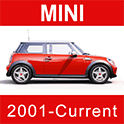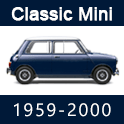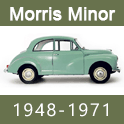| Orig. Posting Date | User Name | Edit Date |
| Mar 18, 2013 05:47PM | DRMINI | |
| Mar 18, 2013 04:11PM | 1963SV2 | |
| Mar 18, 2013 02:40PM | DRMINI | |
| Mar 18, 2013 02:06PM | 1963SV2 | |
| Mar 18, 2013 01:06AM | DRMINI | Edited: Mar 18, 2013 01:09AM |
| Mar 17, 2013 09:07PM | 1963SV2 | |
| Mar 17, 2013 08:47PM | Hunter2 | |
| Mar 17, 2013 02:41PM | 1963SV2 | |
| Mar 17, 2013 02:20PM | xcc_rider | Edited: Mar 18, 2013 08:06AM |
| Mar 17, 2013 02:14PM | 1963SV2 | |
| Mar 17, 2013 01:37PM | Inno special | |
| Mar 17, 2013 12:46PM | Cup Cake | Edited: Mar 17, 2013 12:47PM |
| Mar 17, 2013 11:16AM | Air2air | |
| Mar 17, 2013 10:41AM | BRG Mini |
|
Total posts: 8645
Last post: Dec 16, 2020 Member since:Oct 27, 2000
|
Cars in Garage: 0
Photos: 0 WorkBench Posts: 0 |

|
I'd say 35-40lb/ft would do for spacer selection testing, with either CV type.
Kevin G
1360 power- Morris 1300 auto block, S crank & rods, Russell Engineering RE282 sprint cam, over 125HP at crank, 86.6HP at the wheels @7000+.
|
Total posts: 1716
Last post: Oct 18, 2020 Member since:Oct 18, 2011
|
Cars in Garage: 0
Photos: 0 WorkBench Posts: 0 |
That would make sense - the drawing is not a manufacturing spec so some of the fine detail (like tolerances) don't appear...
How much torque would you suggest needs to be applied to test the spacer dimension??
Cheers, Ian
|
Total posts: 8645
Last post: Dec 16, 2020 Member since:Oct 27, 2000
|
Cars in Garage: 0
Photos: 0 WorkBench Posts: 0 |

|
The drawings may be wrong, the small CV nut does not pull the drive flange right through the bearings and up against the CV body. There is an air gap there of 1.5mm? (guess). They do not touch.
In both CV type configurations the centre spacer width is critical, for the same reasons. If you do not have it wide enough you will brinell the bearings, if too wide, the assembly will have endfloat.
Each assembly needs to be checked for smooth rotation after torqueing up. I do a trial build with no seals fitted. If stiff and jerky when turned by hand I select a wider spacer. If it has endfloat, I measure that and select or machine a spacer to be (endfloat +.001") thinner.
When I'm happy I then fit the seals....
These problems arise if using `noname' roller bearings, or if the center web in the hub is worn. Timken kits are usually OK in new or undamaged hubs.
Why is the disK type CV done up so tight? This drive flange (unlike the drum one) is only located on a very short spline and is not supported in both bearings. If loose, it wears then rocks about and affects the bearing preload.
Kevin G
1360 power- Morris 1300 auto block, S crank & rods, Russell Engineering RE282 sprint cam, over 125HP at crank, 86.6HP at the wheels @7000+.
|
Total posts: 1716
Last post: Oct 18, 2020 Member since:Oct 18, 2011
|
Cars in Garage: 0
Photos: 0 WorkBench Posts: 0 |
Yes , I was wrong ... I didn't realise that the drum/Cooper drive flange is a different configuration to that of the S - I just thought it was smaller....
And, what's more interesting, is the question as to whether tapered rollers work properly on drum/Cooper brakes??
Its obvious from the drawings that on an S the torque on the nut loads the rollers against their outer races with the actual load being controlled by the width of the centre spacer. However, the drum/Cooper nut loads the drive flange against the outer face of the CV joint... so it becomes critical that the spacer is exactly the correct thickness.
Too thin a spacer will cause the exact symptoms being complained about ..as would one that is too thick....
And why does the S hub require such a hgh specified torque????? Was it just because of higher loads expected in competition???
????????
Cheers, Ian
|
Total posts: 8645
Last post: Dec 16, 2020 Member since:Oct 27, 2000
|
Cars in Garage: 0
Photos: 0 WorkBench Posts: 0 |

|
Just wondering why that would be - as the torque is to preload the bearings ??? Why else would it matter (as long as it didn't fall off, of course![]() ???
???
Cheers, Ian
Ian,
It is unrelated to bearing type. It is because of the smaller thread and nut on the drum brake Mini/Cooper 997-998 CV. If you put 150lb/ft on it you will strip the thread off the CV. I have seen it happen...
[edit] The spacer is solid, it is not a collapsible spacer as found on a RWD diff pinion. The extra torque will not make the assembly any shorter.. it'll just bugger the threads.
Kevin G
1360 power- Morris 1300 auto block, S crank & rods, Russell Engineering RE282 sprint cam, over 125HP at crank, 86.6HP at the wheels @7000+.
|
Total posts: 1716
Last post: Oct 18, 2020 Member since:Oct 18, 2011
|
Cars in Garage: 0
Photos: 0 WorkBench Posts: 0 |
Just wondering why that would be - as the torque is to preload the bearings ??? Why else would it matter (as long as it didn't fall off, of course![]() ???
???
Cheers, Ian
|
Total posts: 6469
Last post: Sep 29, 2022 Member since:Nov 2, 2006
|
Cars in Garage: 4
Photos: 1354 WorkBench Posts: 2 |

|
WHOA...the torque is for the drive flange/cv type not the bearing type.
|
Total posts: 1716
Last post: Oct 18, 2020 Member since:Oct 18, 2011
|
Cars in Garage: 0
Photos: 0 WorkBench Posts: 0 |
The torque is for the bearings - not the CV type.
I suppose the drum/Cooper CV is smaller but I would not be using the normal (ball bearing) settings...
Cheers, Ian
|
Total posts: 2163
Last post: Aug 21, 2017 Member since:Oct 6, 2004
|
Cars in Garage: 0
Photos: 0 WorkBench Posts: 0 |

|
Eh, dont torque it to 150-160lbs. Its still a drum brake set up and should be torqued to 60-65lbs only.
EDIT: The bearing races ride on the drive flange shaft, not the cv joint shaft. Sorry Ian but I gotta disagree with ya on this one, the torque spec is for the drum brake cv joint and shouldn't be increased for tapered bearings. I havent tried it but I doubt the threads on a drum brake cv will hold 150-160lbs torque.
I could be wrong but I dont want to find out at 70mph either...
"I don't know much, but what I do know, I know little of "
|
Total posts: 1716
Last post: Oct 18, 2020 Member since:Oct 18, 2011
|
Cars in Garage: 0
Photos: 0 WorkBench Posts: 0 |
Sometimes the tapered spacers on the drive flange clamp onto the CV stopping it being pulled all the way through the bearings. So, despite the drive shaft nut being properly torqued up, the bearings are not clamped between the nut/spacer and the CV joint.
Remove the main nut and make sure the CV is "all the way" though the bearings - you can feel this by manipulating the CV by hand. Replace nut and re-torque..
Or, replace the outer conical spacer with a large flat washer (one that won't bend or bind on the CV shaft).
Replace and torque up the nut (no need to go overboard - just tighten it up).
Remove nut and washer, re-install conical spacer and torque nut to spec (150-160ftlb - ish)
Good luck, Ian
|
Total posts: 746
Last post: Oct 4, 2017 Member since:Aug 28, 2003
|
Cars in Garage: 0
Photos: 0 WorkBench Posts: 0 |

|
Clean and inspect the bearings. If damage is there could be obvious, maybe not with just 20 miles. No damage on bearings, reinstall.
Ignorence is bliss til someone says you are wrong.
|
Total posts: 10335
Last post: Aug 19, 2016 Member since:May 13, 2001
|
Cars in Garage: 0
Photos: 0 WorkBench Posts: 0 |

|
Try the bearing before buying a new set. I doubt 20 miles would damage it with new grease.
The power of accurate observation is commonly called cynicism by those who have not got it. G.B.S. Sarcasm is the lowest form of wit. Oscar Wilde
//www.cupcakecooper.ca/
|
Total posts: 1557
Last post: Sep 26, 2016 Member since:Nov 24, 2012
|
Cars in Garage: 0
Photos: 0 WorkBench Posts: 0 |
Is the castle nut tight? It may loosen, which the guys here told me was a bad CV - not a big deal to replace.
|
Total posts: 5865
Last post: May 6, 2013 Member since:Apr 13, 2003
|
Cars in Garage: 0
Photos: 0 WorkBench Posts: 0 |

|
I replaced some worn wheel bearings on a mini with drum brakes with tapered roller bearings. One side went perfectly. The other side had some issues. Due to it being a long day and me being tired, I didn't notice that the hub itself was worn. Wheel play was about the same as before I replaced the bearings. Put about 20 miles or so on it that way before I replaced the hub with a good one. Now the play is reduced, but it's still there. I remember reading that sometimes the spacers are not made properly and may be too thick. At this point, so have 3 options: 1) take the spacer out and sand it down a bit and refit, 2) buy a new spacer, or 3) buy a new wheel bearing kit.
I'd try option 1, but since I drove on it, to you think I may have damaged the new bearings? I'd hate to go through all that work just to find out I need a new set anyway. I'd appreciate any advice or opinions.




